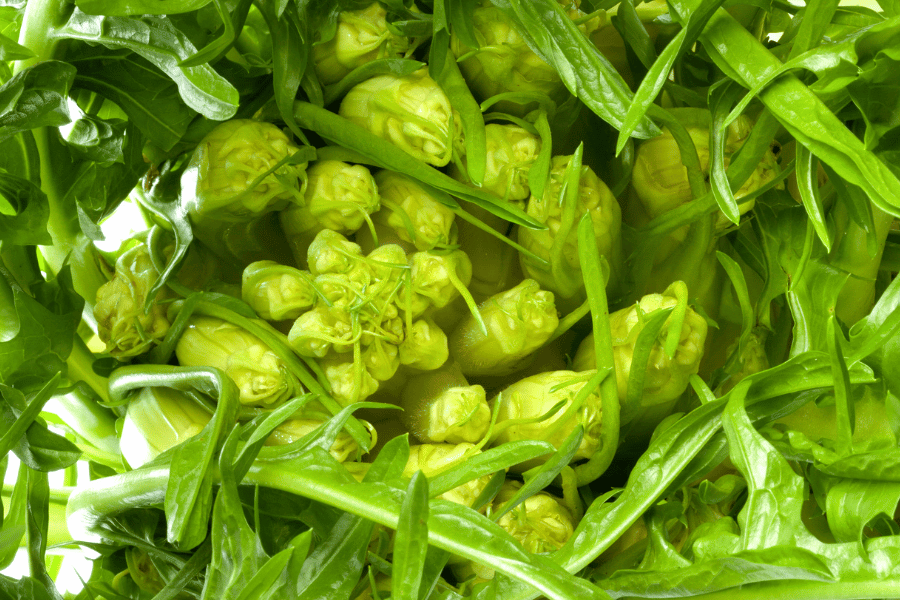Olive oil has proven to be one of the healthiest fats that one can consume in a balanced diet. But not all oils are made equal. At the store you’ll notice different types of olive oils, all with different labels. Which one do you buy? What do these labels even mean? Can you get all the benefits from any type of olive oil? Does it really matter which one you get?
In short, yes it matters and we’ve got you covered. There are significant differences in the quality and production of the different types of oils. These differences not only impact the oil’s flavor, but also its overall health benefits. Reading the labels and knowing what they mean is so important when buying olive oil to ensure that you and your family are consuming the healthiest oil possible.
Buying The Best Olive Oil
There are eight types of olive oil according to European law. In addition to that, there is an abundance of different labels, which can describe how it was processed and the quality of the olive themselves.
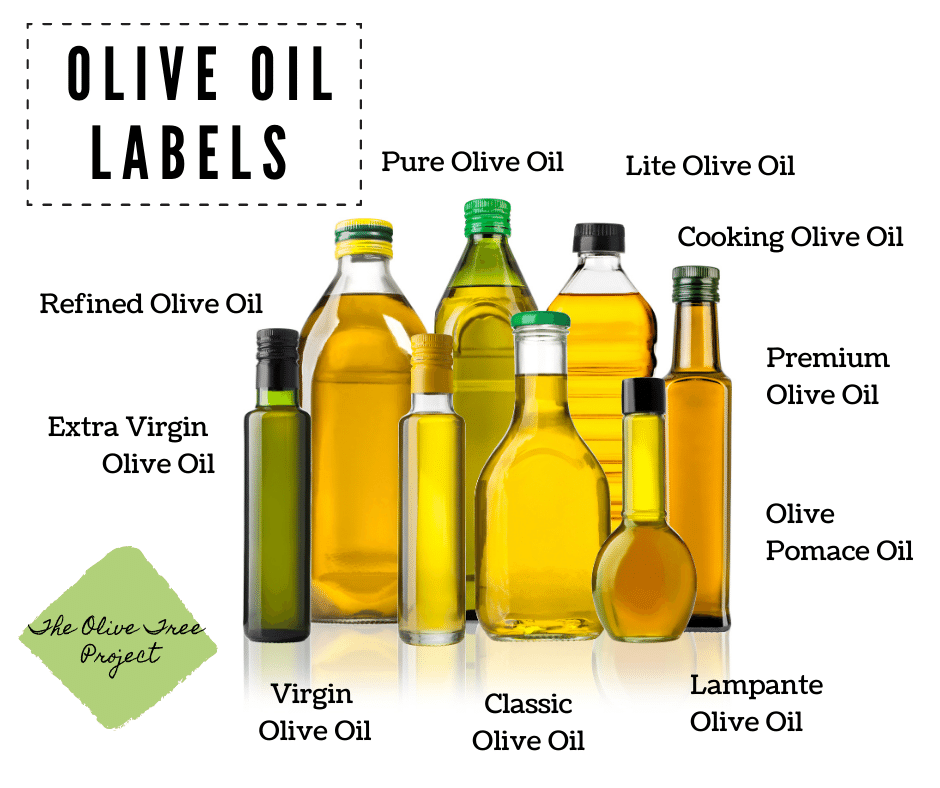
Extra Virgin Olive Oil
The best type of olive oil to buy is Extra Virgin Olive Oil (EVOO).It’s the least processed, has the most flavor and is the most nutrient dense. It’s an unrefined, high quality oil that has the most health benefits out of all the other olive oils. It can be consumed raw or cooked.
Extra virgin olive oil is either pressed or centrifuged from fresh, top quality olives. It’s obtained from the first pressings in order to preserve its high antioxidant index. It doesn’t have any further processing nor any added chemicals, preservatives or additives. It has up to 0.8% acidity and a clear or cloudy green-gold appearance. Extra virgin olive oil has a medium to bold flavor, depending on the olive type, when and where it is harvested, and the weather during the growing season.
According to Dr. Selina Wang, the research director at the Olive Center at the Robert Mondavi Institute for Food and Wine Science at the University of California, Davis, “Extra virgin olive oil is just fruit juice that comes from olives.” Any other type of refined oil from olives is a “completely different product.” [1]
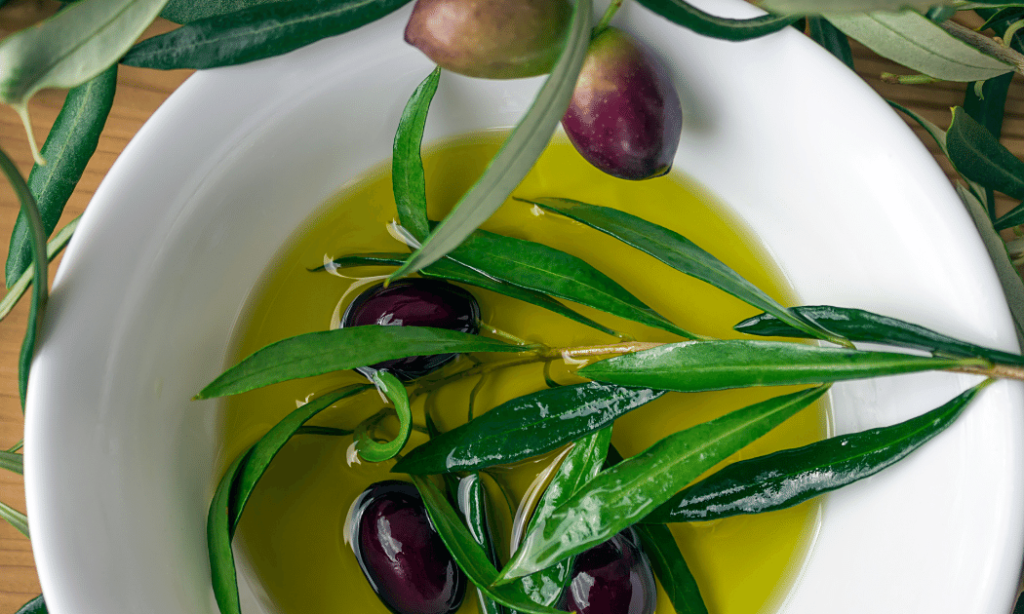
When buying extra virgin olive oil, you may come across the following labels:
- First-Pressed – This means that the olives were pressed or crushed only once. All extra virgin olive oil is already first-pressed. If olives are pressed more than once, then the quality of the oil would be reduced and it wouldn’t qualify as extra virgin olive oil.
- Cold-Pressed or Cold-Extraction – These labels do not necessarily equate to a higher quality EVOO. Cold pressed means that the olives were pressed using the traditional hydraulic press method, where temperatures did not exceed 27°C. Cold extraction means the olives were processed by centrifuge in temperatures that also do not exceed 27°C. All extra virgin olive oils are already either cold pressed or cold extracted. If the oil is heated in the process, it would no longer be considered extra virgin olive oil because the heat destroys the nutrient density.
- Monovarietal or Monocultivar- Extra virgin olive oil is usually made from different varieties of olives, typically a mix of all the olive tree types present in the grove. However, monovarietal/monocultivar extra virgin olive oil, is made from only one variety of olive. According to a study published in the U.S. National Library of Medicine National Institutes of Health, Italy is the “leading country for cultivar biodiversity, accounting for over 800 varieties .” [2]

- Filtered or Unfiltered – Once the oil is extracted, producers decide whether to have it filtered to remove the sediment. A filtered EVOO has a clear green-gold color; Whereas, the unfiltered EVOO may be cloudy from the particles that are being suspended in the oil. All extra virgin olive oils have natural components called Phenols. They are what give the oil its flavor and have antioxidant and anti-inflammatory properties. Filtering the oil slightly decreases the concentration of certain Phenols, therefore slightly reducing the antioxidant properties and changing the taste.[3] However, filtering EVOO increases the olive oil’s stability, allowing it to have a longer shelf life. When buying an unfiltered EVOO, be sure to check the production date to ensure its freshness and consume it within a year. Choosing between filtered and unfiltered extra virgin olive oil is a personal choice as both are high quality oils.
- Organic or Bio – This label indicates that olives used are certified organic. They were grown free of pesticides, artificial agents or chemical fertilizers. Whenever possible it’s always better to buy organic. It’s better for your health to avoid ingesting pesticides and it’s more sustainable for the planet.
- Ultra Premium – Due to the saturation of the market, producers have wanted to further define extra virgin olive oil classifications. This is a luxury label reserved for the finest extra virgin olive oils. Ultra premium extra olive oils have additional requirements in the oils chemistry, production, storage, transportation, testing and organoleptic properties (i.e. the appearance, feel, aroma and taste).
Virgin Olive Oil
Virgin olive oil is also an unrefined oil that is extracted without chemicals and has up to 2% acidity. It’s of a lower grade than EVOO because it has slight defects in its flavor and aroma. It also has antioxidants and polyphenols, but less than extra virgin olive oils. When choosing between extra virgin or virgin olive oil, the virgin oil might be cheaper, but the extra virgin is healthier and has better flavor.
Refined Olive Oil
All refined olive oils start off with lower quality olives. The olives might not be very fresh or they might be filled with pests, like maggots from olive flies. These olives go through a refining process to burn off all the impurities to allow it to be commercialized. “It’s degummed, neutralized, bleached, winterized, and then deodorized. Chemical solvents may be used, and the last step often involves heating the oil to 500 degrees Fahrenheit.” [1]
In this process, the health benefits are completely removed. The oil becomes clear in color and it doesn’t have any flavor. Refined oils have a longer shelf life and added preservatives. Producers may also supplement it with vitamin E.
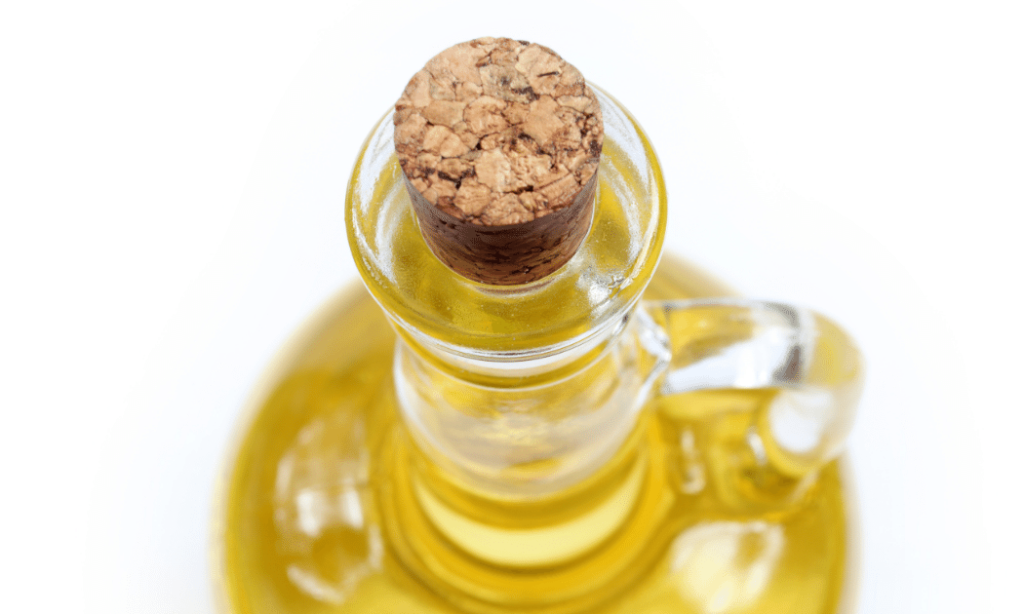
Pure Olive Oil / Classic Olive Oil / Cooking Olive Oil
Olive oils with these labels are usually a blend of refined olive oils and virgin olive oils. Different brands will have differing blends. The color, flavor and nutrient level will depend on how much virgin oil is incorporated in the mixture. These oils have added preservatives and some producers may also add vitamin E supplements.
Lite or Light Olive Oil / Extra Light Olive Oil
The ‘lite/light/extra light’ labels on an olive oil bottle refers to the color and flavor of the product. It does not refer to the caloric index of the oil and it is not a healthier choice over an EVOO. These are typically a blend between refined olive oil and other vegetable oils. Like other refined oils, these also have preservatives and low nutritional value.
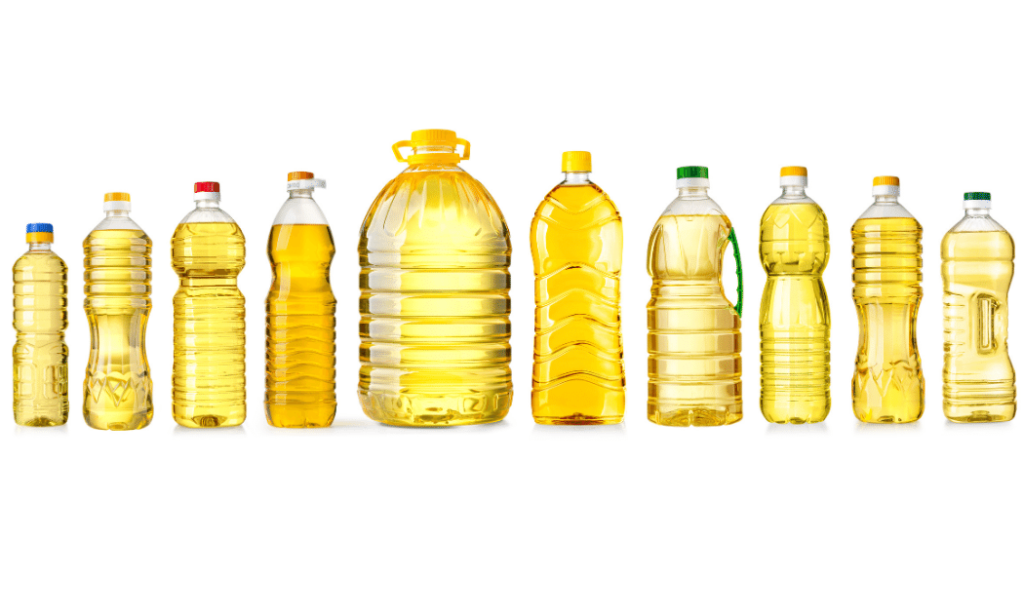
Olive Pomace Oil
This is the lowest grade olive oil that can be bought for human consumption. It’s made from the left over olive pulp or pomace that have already been processed. Since very little oil remain in this pulp (which also consists of olive skins, seed and stems), a chemical solvent is used in conjunction to hight heat to extract the remains. It’s then refined and has preservatives added to it. Although a cheaper option, it is best to completely avoid olive pomace oil as carcinogenic contaminants have been found in this oil.
Lampante Oil
This is a type of virgin oil that is not fit for human consumption because it hasn’t passed the needed requirements. Lampante oil has high acidity and an unpleasant flavor and smell. Historically this was the oil that was used as fuel for lights. In modern times Lampante oil is either taken to be refined (and reintroduced as refined or ‘regular’ olive oils) or it’s used to be processed into oil based products, like soap.
In summary:
Manufacturers use various labels as marketing tactics to get their oils sold. Always read the back label to be informed on what you are consuming. We suggest that organic extra virgin olive oil is the best way to go. It’s the least processed, with no extra additives. Organic EVOO is the most nutrient dense and is more environmentally sustainable.
For more information on olive oil and wellness , click here.
Sources: [1] Food Print article by Lisa Elaine Held. [2] Science Alert Study. [3] Study on 11 Monovarietal Extra Virgin Olive Oil by Giuseppe de Lecce et al. North American Olive Oil Association Article . UC Davis Olive Oil Center’s Research Report. Berkley Wellness Article. Curejoy Article. Olive Oil Exchange Article. Olive Oil Times Article.




